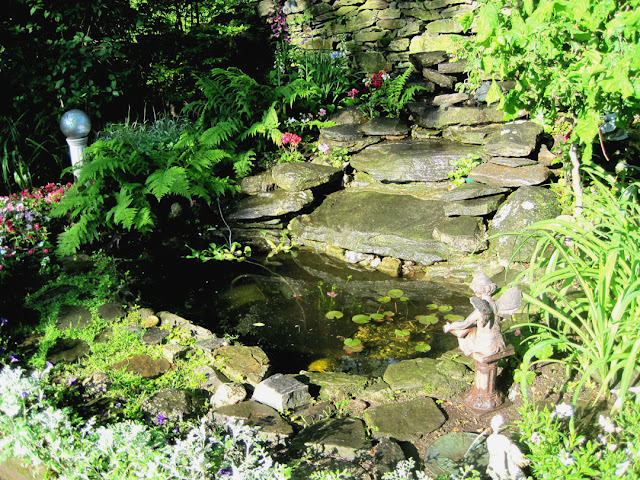Facebook reminded me that I posted this exactly five years ago. I'm re-posting it now and am happy to say that my dear English friend and her 95-year-old husband are still thriving in Gloucestershire.
We’re back in Northern Greece after a four-day weekend spent in the English countryside—specifically in Gloucestershire where a dear friend was celebrating her husband’s 90th birthday with a lavish outdoor party at Chastleton House which included tours of the stately home, waiters who were professional opera singers and a picnic lunch which included champagne and smoked salmon and cucumber sandwiches in the famous topiary gardens.
We’re back in Northern Greece after a four-day weekend spent in the English countryside—specifically in Gloucestershire where a dear friend was celebrating her husband’s 90th birthday with a lavish outdoor party at Chastleton House which included tours of the stately home, waiters who were professional opera singers and a picnic lunch which included champagne and smoked salmon and cucumber sandwiches in the famous topiary gardens.
The day before—Saturday—an erudite gentleman named Sebastian Halliday gave us a tour of the bucolic villages of the area including Bibury, Swinbrook, Minster Lovell and Burford.
We explored the thatch-roofed cottages and ancient churches covered with climbing roses and honeysuckle vines and ate in a pub overlooking the wide, shallow river that wound through each village.
Along with Japanese tourists we photographed swans, ducks and horses with new foals, sheep and gardens at their peak of glory. We saw graves of knights and soldiers, church dignitaries and ordinary people who died of the black plague in 1349.
I love exploring cemeteries in every place I visit. (Favorites are in Edinburgh, New Orleans, Pere Lachaise in Paris and the Poor Cemetery in Martinique.) The green, mossy ancient stones leaning every which way in a rural Cotswold churchyard always remind me of Sir Thomas Gray’s “Elegy Written in a Country Churchyard” which mourns the many simple peasants and villages who have lived and died without leaving any record of their lives or their talents and abilities.
I photographed the tombs of the Fettiplace knights, all resting on their elbows in the church of St. Mary’s in Swinbrook, and was fascinated by the tombs of several of the Mitford sisters—perhaps the most controversial, scandalous and talented sisters ever produced by England. (The engraving at the top of Nancy Mitford's gravestone is a mole, which is the animal of the coat of arms of the Mitfords because she hated crosses.)
But the only gravestone that moved me to tears was one near the ruins of the Lovell stately home at Minster Lovell, near the wide shallow river, filled with water lilies, where children and dogs were wading. I was drawn to the grave because it featured a statue of a sleeping cat. The stone read “Noah Wright/ 14-11-05/ 16-1-05/ May your light shine through.”
This grave was in memory of a little boy, born in November of 2005 who lived only two days—not even surviving to his first Christmas. His parents and mourners had visited his grave repeatedly, leaving flowers (fresh and artificial), a stone, and, on top of the sleeping cat statue, a yellow ceramic star. I picked it up and turned it over, thinking it looked like a Christmas ornament. On the other side someone had lettered in a child-like hand “Noah.”
I put the star back where it was and went into the church to photograph the tomb of a sleeping knight with his hands folded in prayer but I couldn’t get the thought of Noah and his parents out of my mind.
And I remembered the most famous lines from Thomas Gray’s elegy:
Full many a flower is born to blush unseen
And waste its sweetness on the desert air






 Christo
Christo










































